Disasters can strike anytime, anywhere, and the impact can be devastating. That’s why it’s crucial to have a comprehensive disaster recovery plan in place to mitigate the damage. In such situations, first aid kits play an essential role in ensuring the safety and well-being of those affected.
Without adequate first aid supplies, injuries can quickly escalate into life-threatening emergencies. This is why it’s essential to consider the role of first aid kits in disaster recovery planning. By having well-stocked first aid kits readily available, the impact of disasters can be significantly minimized, and lives can be saved.
First aid kits are an integral part of emergency preparedness, ensuring that medical emergencies are responded to promptly. During disasters, first aid kits can provide immediate medical assistance to those affected, potentially reducing the severity of injuries. This makes first aid kits an indispensable resource in disaster recovery.
In the following sections, we will explore the significance of disaster recovery planning, the essential contents of first aid kits, the importance of first aid training, and collaborative efforts required for effective implementation of first aid kits in disaster recovery planning. We will also discuss the importance of ensuring accessibility and maintenance of first aid kits and evaluating their effectiveness in disaster recovery planning.
By the end of this article, you will have a better understanding of the role of first aid kits in disaster recovery planning and the importance of incorporating them into your disaster preparedness strategy.
The Significance of Disaster Recovery Planning
When disaster strikes, having a well-designed disaster recovery plan can make the difference between an ineffective response and a successful recovery effort. Recovery planning involves establishing a comprehensive strategy to minimize the damage caused by disasters, including natural disasters, cyber attacks, or other crises that can impact an organization’s operations.
Recovery planning is necessary to protect lives, ensure business continuity, and prevent financial losses. It involves creating contingency plans, identifying critical business processes, and preparing for the unexpected.
Disaster recovery planning involves various stages that include:
- Assessing the potential risks and vulnerabilities of the organization
- Developing a comprehensive plan that outlines the steps to take in an emergency
- Testing the plan to ensure it works effectively
- Maintaining and updating the plan regularly to keep it relevant and effective
Having an effective disaster recovery plan in place is essential for all organizations, regardless of their size or industry. By investing time and resources in disaster recovery planning, organizations can minimize the impact of disasters and ensure a rapid response to emergencies.

The Role of First Aid Kits in Emergency Preparedness
When it comes to disaster recovery, preparedness is key. This is where the role of first aid kits becomes crucial in emergency preparedness. A well-equipped first aid kit can provide immediate medical assistance in disaster situations, potentially saving lives and reducing the severity of injuries.
Emergency preparedness involves proactive measures, and first aid kits play a significant role in this process. It is essential to have readily available first aid kits to ensure a prompt response to medical emergencies during disaster situations. First aid kits equipped with essential supplies can help stabilise victims of disasters while awaiting professional medical assistance.
Moreover, first aid kits are not only important during the disaster but also in the immediate aftermath. They can be useful in dealing with minor injuries or illnesses, allowing emergency responders to focus their attention on more severe cases. The presence of first aid kits can also provide a sense of security and comfort to individuals affected by disasters.
Therefore, when establishing disaster recovery plans, it is essential to include comprehensive first aid protocols and resources, including well-stocked first aid kits. This will ensure that appropriate medical care can be provided in the immediate aftermath of a disaster.
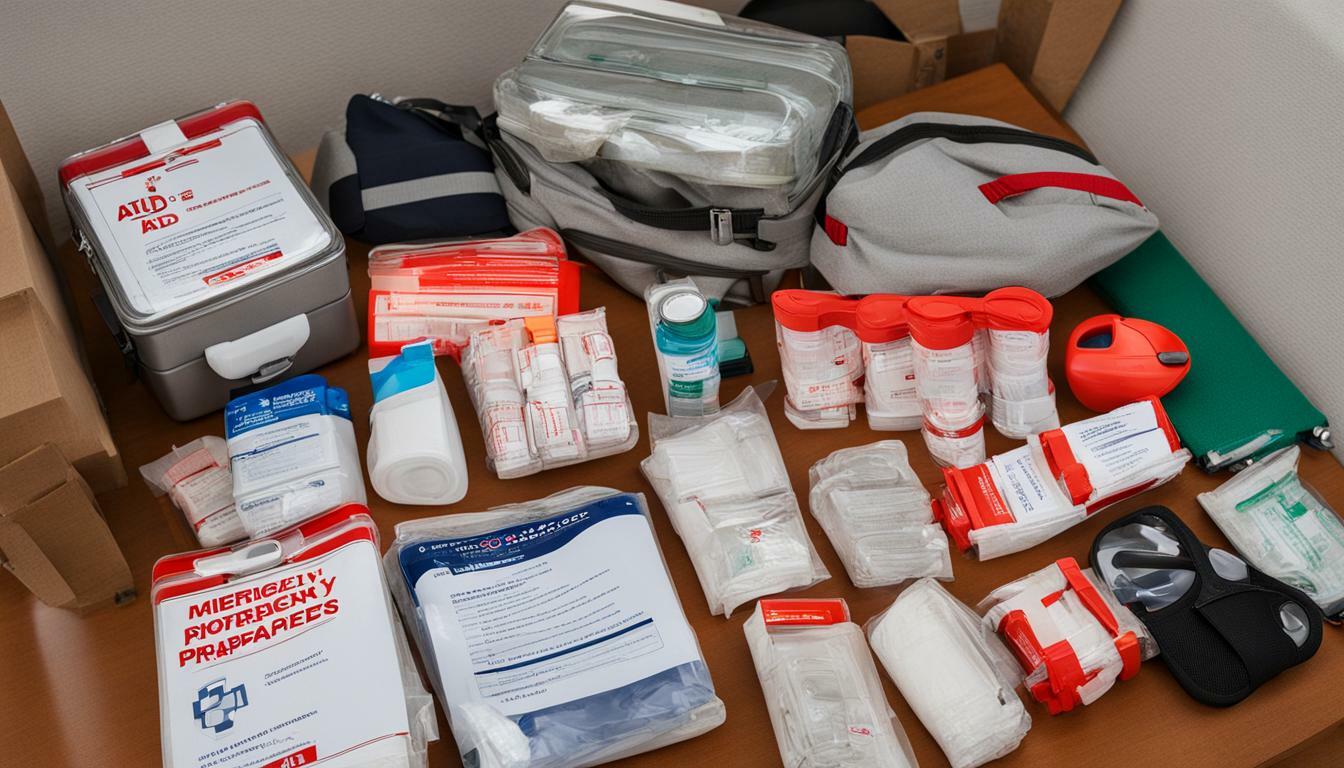
The Role of First Aid Kits in Mitigating the Impact of Disasters
First aid kits are an essential component of disaster recovery planning, allowing for prompt medical assistance to be provided to those affected. During disasters, individuals may suffer from injuries such as cuts, bruises, and broken bones, which can be life-threatening if left untreated. The presence of well-stocked first aid kits can help in mitigating the severity of injuries and potentially save lives.
Disasters often result in the breakdown of essential services, including medical care, leaving many individuals without access to vital medical assistance. In these circumstances, first aid kits can provide an immediate response to medical emergencies to those who need it most. Thus, the role of first aid kits in mitigating the impact of disasters cannot be overstated.

During disasters, the time it takes for medical help to arrive can be significantly increased due to disrupted transport or the sheer volume of casualties. In such cases, first aid kits can provide crucial medical assistance while individuals wait for professional help to arrive. A well-stocked first aid kit can provide the necessary medical supplies, including bandages, antiseptics, and painkillers, to help prevent further harm.
Moreover, first aid kits can be used to treat minor injuries and illnesses, freeing up much-needed resources for those with severe injuries that require professional medical attention. In this way, first aid kits play a vital role in disaster recovery planning.
In conclusion, first aid kits are critical tools in mitigating the impact of disasters. They provide prompt medical assistance to those affected, potentially saving lives and reducing the severity of injuries. Disaster recovery planning should prioritize the inclusion of well-stocked first aid kits to enhance the overall response to disasters and ensure individuals receive the necessary medical care when they need it most.
Essential Contents of First Aid Kits for Disaster Recovery
Effective disaster recovery planning involves incorporating well-stocked first aid kits containing essential medical supplies. A comprehensive first aid kit should contain the following:
| Item | Quantity |
|---|---|
| Dressings and bandages of various sizes | At least 10 of each size |
| Gauze pads | At least 10 |
| Antiseptic wipes | At least 10 |
| Tweezers | 1 pair |
| Scissors | 1 pair |
| Disposable gloves | At least 2 pairs |
| Thermometer | 1 |
| Triangular bandages | At least 2 |
| Instant cold packs | 2 |
| Adhesive tape | 1 roll |
| Tourniquet | 1 |
| First aid manual | 1 |
It is important to regularly check and replace any expired items in the kit to ensure that the first aid supplies are always fresh and effective.
The Role of First Aid Kits in Disaster Recovery Planning
When it comes to disaster recovery planning, incorporating first aid kits is crucial. However, simply having first aid kits available is not enough. It is essential to provide training to individuals to maximize the effectiveness of first aid kits during recovery efforts.
Basic first aid techniques like administering CPR, using a defibrillator, and stopping bleeding can make a significant difference in saving lives during disaster situations. Training and awareness can also help people understand the importance of promptly seeking medical assistance and how to use first aid kits effectively.
Including first aid training in disaster recovery planning can have a tremendous impact on the overall response to emergencies. By providing the necessary tools and knowledge, each individual can contribute to effective disaster recovery efforts and potentially save lives.
Moreover, first aid kit supplies should be regularly checked, replenished, and properly stored. Accessibility is also an essential factor to consider. First aid kits should be easily available in case of emergencies.
Careful evaluation of the effectiveness of first aid kits in disaster recovery planning is necessary. Real-life scenarios can give insight into how well-stocked first aid kits are serving their purpose. Through review and refinement of first aid protocols, disaster recovery planning can continually be improved to ensure the most effective response in times of crisis.
In summary, first aid kits play a crucial role in disaster recovery planning. By incorporating training, ensuring accessibility and maintenance, and continuously refining first aid protocols, the impact of disasters can be significantly reduced. Disaster recovery planning should prioritize including comprehensive first aid resources to enhance the overall response and save lives in the face of emergencies.
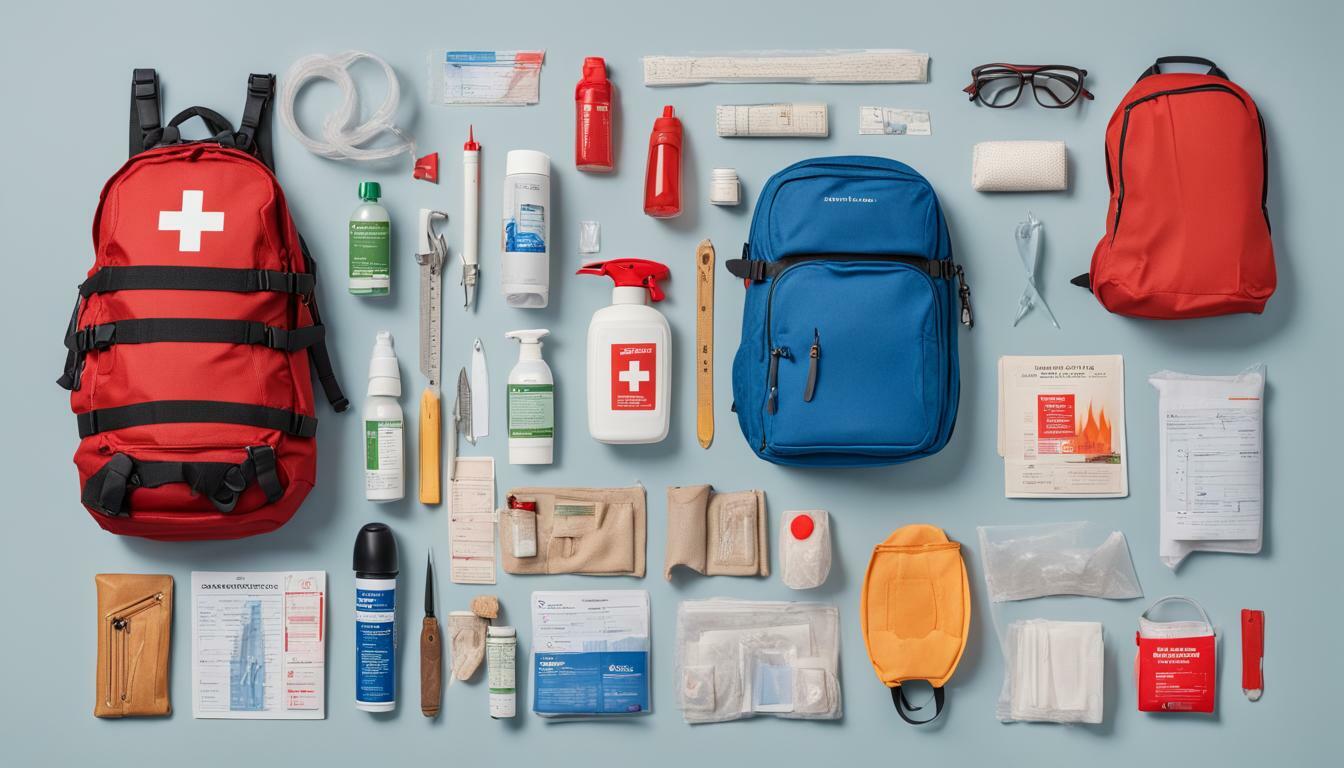
The Role of First Aid Kits in Disaster Preparedness
Disaster preparedness is an essential aspect of disaster recovery planning, and first aid kits play a significant role in this process. In times of crisis, having readily accessible first aid kits can make a difference in saving lives.
First aid kits should be an integral part of any disaster preparedness plan, including those formulated by businesses, schools, and communities. By having well-stocked first aid kits in easily accessible locations, individuals can provide immediate medical care to those in need, potentially reducing the severity of injuries and saving lives.
Moreover, first aid kits can be customized to meet specific disaster situations, such as natural disasters, severe weather, or chemical accidents. By creating disaster-specific first aid kits, individuals can be better prepared to handle the unique medical challenges posed by different types of disasters.
Training in first aid techniques is also an essential component of disaster preparedness. Individuals who have undergone first aid training are better equipped to handle medical emergencies and can provide more effective first aid in disaster situations.
Collaborative efforts are essential in the implementation of disaster preparedness plans. Communities, businesses, schools, and other stakeholders need to collaborate to develop comprehensive first aid protocols and resources. By working together, stakeholders can ensure that first aid kits are available and accessible to all individuals in the community, and training is provided to those who need it most.
Ensuring the accessibility and maintenance of first aid kits is crucial in disaster preparedness. First aid kits need to be in good working condition, and individuals need to know where they are located in the event of a disaster. Regular checks on the contents of first aid kits should be carried out to ensure that supplies are up-to-date and ready for use.
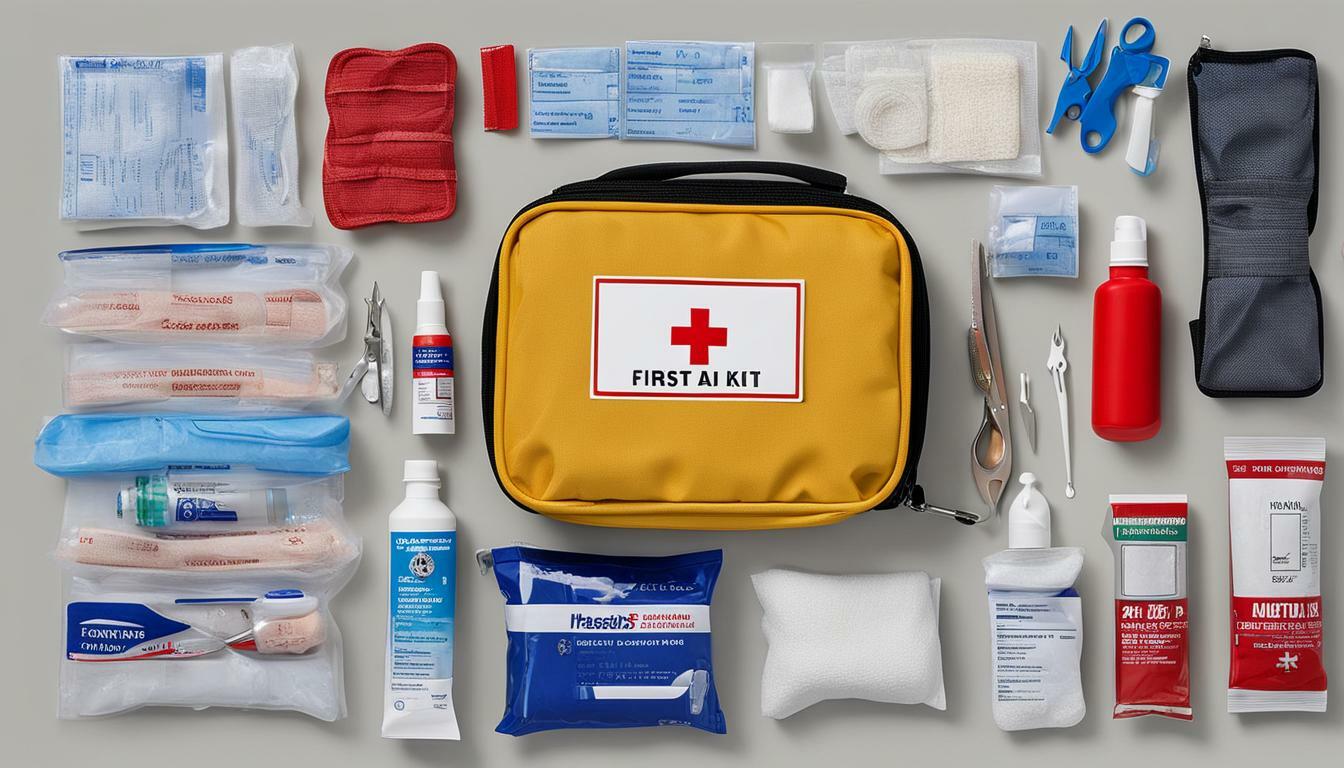
Overall, the role of first aid kits in disaster preparedness cannot be overstated. Disaster preparedness plans should prioritize the inclusion of comprehensive first aid protocols and resources to enhance the overall response to emergencies. By incorporating well-stocked first aid kits, providing training, ensuring accessibility and maintenance, and fostering collaborative efforts, communities and businesses can be better prepared for disasters and potentially save lives.
The Importance of Ensuring Accessibility and Maintenance of First Aid Kits
Having well-stocked first aid kits is vital, but their effectiveness is impeded if they are not easily accessible or properly maintained. In times of crises, delays in accessing first aid kits can increase the severity of injuries and even lead to fatalities. Therefore, it is crucial to ensure the accessibility and maintenance of first aid kits as part of disaster recovery planning.
Accessibility refers to the ease of locating and retrieving first aid kits during emergencies. First aid kits should be stored in areas that are easily accessible to everyone, including individuals with disabilities. Additionally, signage and clear instructions should be visible to guide people towards the location of the kits.
The maintenance of first aid kits is equally important. Over time, some items in the kits can expire or become damaged, reducing their effectiveness. Regular checks and inspections should be conducted to ensure that all items are in good condition and replacements made when necessary. A well-maintained first aid kit ensures that all the necessary supplies are available and in working order when needed.
| How to Maintain First Aid Kits |
|---|
| 1. Store in a cool, dry place to prevent moisture and heat damage to some items. |
| 2. Check the expiration dates of all items and replace those that have expired. |
| 3. Check the condition of equipment such as bandages, scissors, and gloves and replace those that are damaged or worn out. |
| 4. Ensure all items are clean and free from dirt or other contaminants. |
| 5. Replace the entire kit every few years, as recommended by the manufacturer. |
Regular training and education on the proper use of first aid kits should also be incorporated into disaster recovery planning. This ensures that individuals are familiar with the contents of the kit, how to use them, and how to provide effective first aid in emergency situations.
By ensuring the accessibility and maintenance of first aid kits, disaster recovery planning can maximize their effectiveness in mitigating the impact of disasters. The image below illustrates the importance of proper maintenance of first aid kits for effective disaster recovery planning.
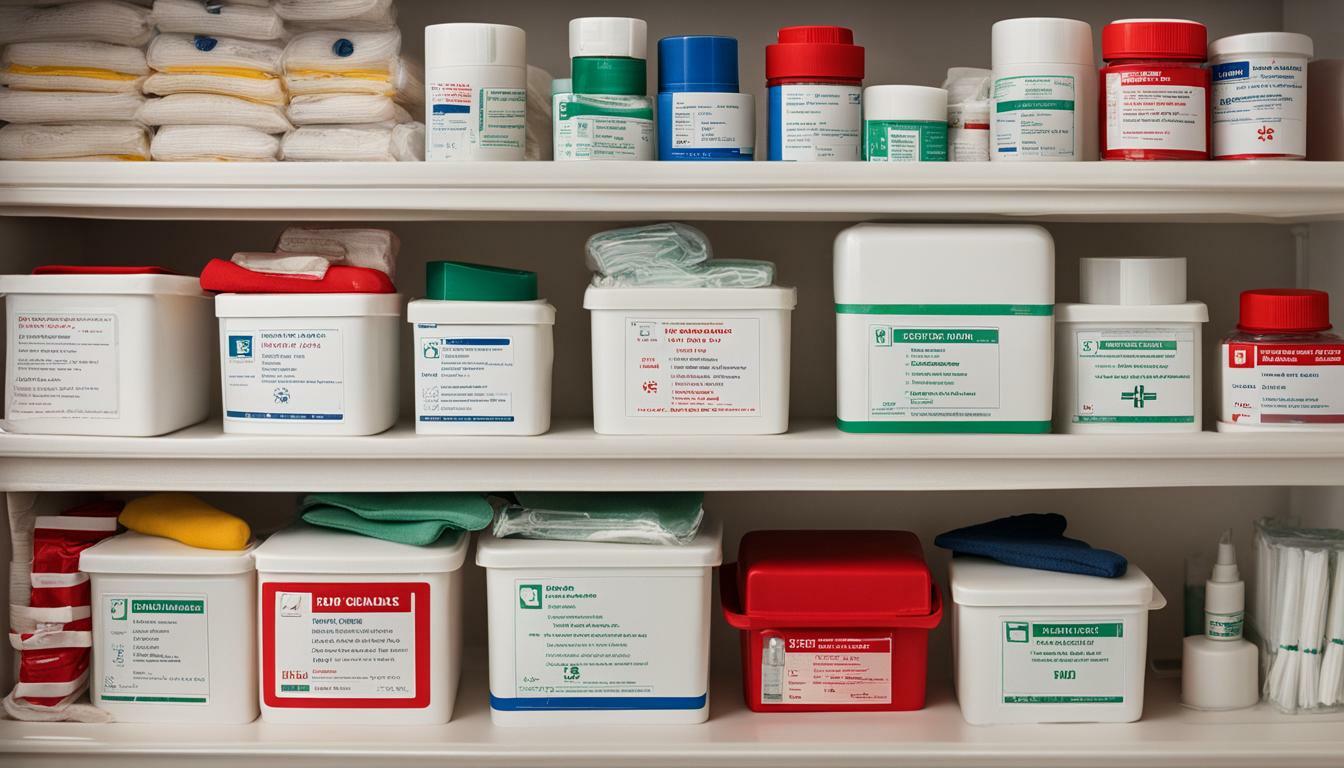
The Role of First Aid Kits in Disaster Preparedness
Disaster preparedness is a proactive process that involves planning, training, and equipping individuals and organizations to respond effectively to emergencies. First aid kits play a significant role in disaster preparedness, as they provide critical medical care to those affected by disasters. Including well-stocked first aid kits in disaster preparedness plans can enhance the overall response to emergencies and potentially save lives.
However, implementing first aid kits in disaster preparedness requires collaborative efforts among various stakeholders. This includes government agencies, healthcare providers, businesses, and community organizations. By working together and sharing resources, first aid kits can be strategically placed in high-risk areas, ensuring maximum coverage and accessibility.
Collaborative efforts can also lead to the development of training programs that equip individuals with the necessary skills to provide basic first aid. This can range from providing CPR to applying bandages and splints, all of which can significantly improve the chances of survival and reduce the severity of injuries during a disaster.
In addition to collaborating in the implementation of first aid kits, it is important to regularly review and update disaster preparedness plans. This includes testing the effectiveness of first aid protocols in real-life scenarios and refining them based on feedback and lessons learned. By constantly evaluating and improving disaster response efforts, stakeholders can be better prepared to face future emergencies.
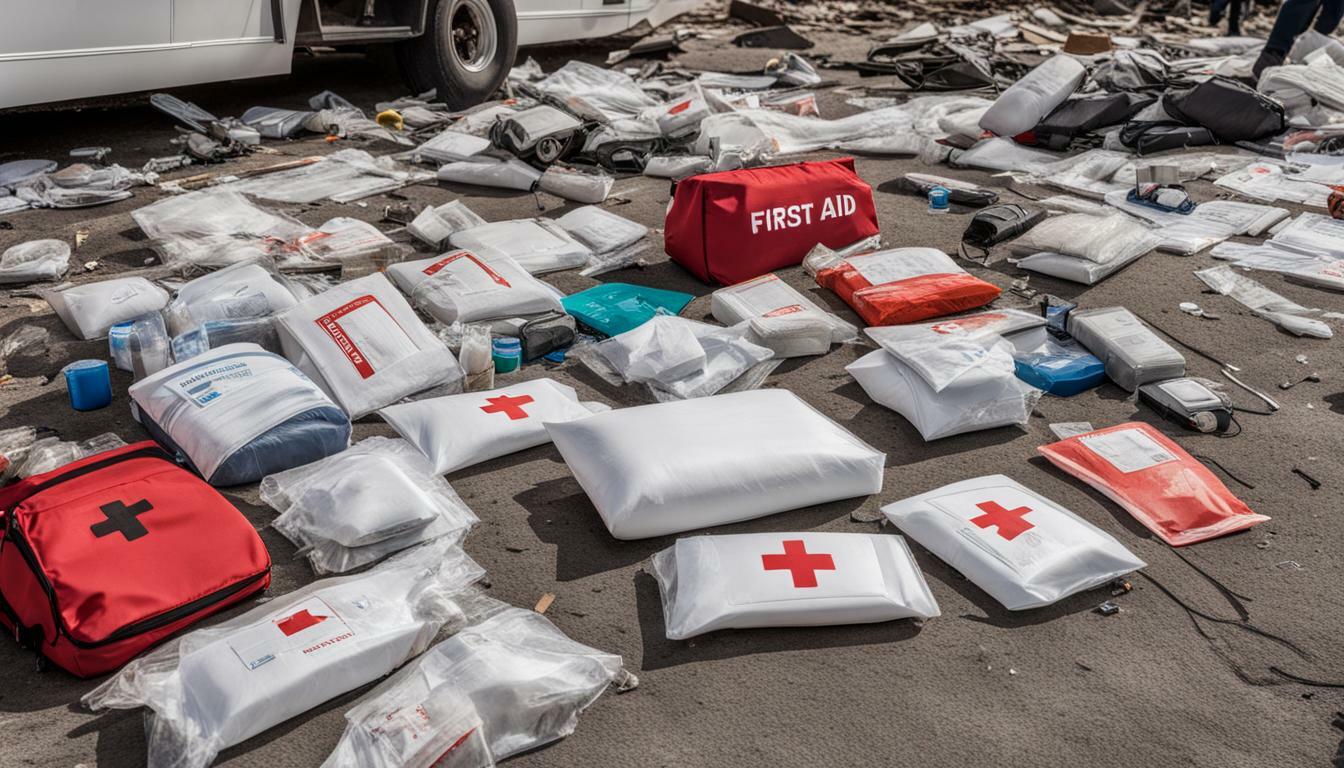
Overall, the role of first aid kits in disaster preparedness cannot be overstated. By fostering collaborative efforts, ensuring accessibility and maintenance, providing training, and regularly evaluating their effectiveness, first aid kits can play a pivotal role in mitigating the impact of disasters in the United Kingdom.
The Role of First Aid Kits in Disaster Recovery
One of the most critical components of disaster recovery planning is the incorporation of well-stocked first aid kits. In times of crisis, medical emergencies are often one of the top priorities that need to be addressed, and having readily available first aid supplies can make all the difference in saving lives and reducing the severity of injuries.
The presence of first aid kits can also contribute to mitigating the impact of disasters. The immediate medical response that first aid kits can provide is crucial in ensuring that those affected by disasters receive the necessary medical care promptly. First aid kits are an essential tool in the overall emergency preparedness plan, giving individuals the means to respond to medical emergencies quickly and efficiently.
However, merely having first aid kits is not enough. It is equally important to ensure that they are accessible and regularly maintained. First aid kits that are not properly stocked or maintained can be ineffective in times of crisis, leading to potentially devastating consequences.
Another crucial aspect of incorporating first aid kits into disaster recovery planning is providing first aid training. Basic first aid training can equip individuals with the skills and knowledge necessary to use first aid kits effectively. It is essential to include this training as part of the overall disaster recovery plan to ensure that everyone knows how to use the available resources to their fullest potential.
When creating a first aid kit specifically designed for disaster situations, it is crucial to include essential contents that can provide the necessary medical care during times of crisis. These contents may include items such as bandages, antiseptic solutions, sterile gloves, and other supplies that can address a wide range of medical emergencies.
It is also important to establish collaborative efforts among various stakeholders in implementing first aid kits across different sectors. By working together, first aid kits can be deployed more effectively and efficiently, leading to a more coordinated response in times of crisis.
Finally, it is essential to evaluate the effectiveness of first aid kits in disaster recovery planning continuously. By reviewing and refining first aid protocols based on real-life scenarios and feedback, disaster response efforts can be continuously improved to enhance the overall response and save lives.

Overall, incorporating first aid kits into disaster recovery planning is essential for a successful response to emergencies. By ensuring the accessibility and maintenance of well-stocked first aid kits, providing first aid training, establishing collaborative efforts, and regularly evaluating the effectiveness of protocols, the impact of disasters can be significantly reduced.
Conclusion
In conclusion, first aid kits play a crucial role in disaster recovery planning. It is essential to understand the significance of disaster recovery planning and how first aid kits can mitigate the impact of disasters. By including well-stocked first aid kits and providing training to individuals in basic first aid techniques, prompt medical assistance can be provided during recovery efforts, potentially saving lives and reducing the severity of injuries.
However, simply having first aid kits is not enough; they must be easily accessible and regularly maintained. Collaborative efforts are also essential in implementing first aid kits across different sectors to ensure a coordinated response in times of crisis. Disaster recovery planning should prioritize the inclusion of comprehensive first aid protocols and resources to enhance the overall response and effectively manage emergencies.
Evaluating the Effectiveness of First Aid Kits in Disaster Recovery
It is also crucial to evaluate the effectiveness of first aid kits in disaster recovery planning regularly. Reviewing and refining first aid protocols based on real-life scenarios and feedback can ensure continuous improvement in disaster response efforts. Disaster recovery planning teams should regularly evaluate the effectiveness of first aid kits and protocols to ensure that they are up-to-date and meet the needs of the community.
By incorporating well-stocked first aid kits, providing training, ensuring accessibility and maintenance, and fostering collaborative efforts, the impact of disasters can be significantly mitigated. Disaster recovery planning should prioritize the inclusion of comprehensive first aid protocols and resources to enhance the overall response and save lives in the face of emergencies.
